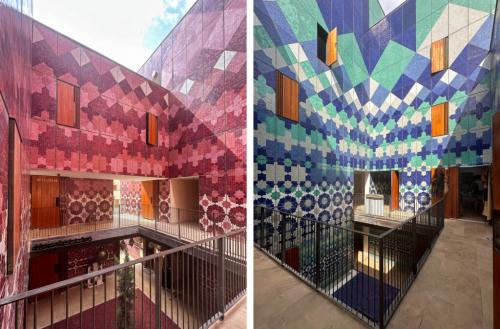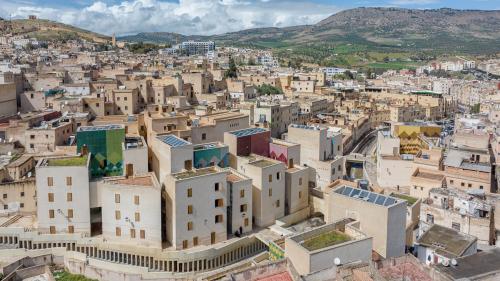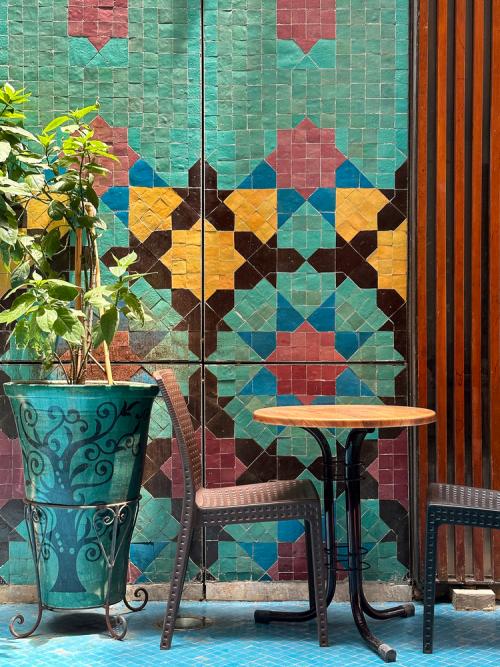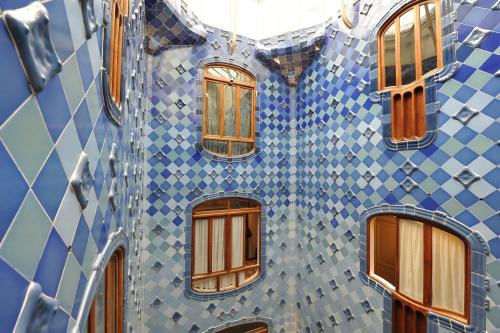Rain screen zellinge panels (188)
The project for the revitalization of the Medina of Fez has been widely published. We do not wish to repeat the information already available in HIC, urbanNext, or Archdaily, but rather to emphasize the success of the envelope solutions and, in particular, to highlight the one adopted in the courtyards.
Beyond the excellent aesthetic outcome of Michael Pinsky's design, the ceramic cladding of the courtyards enables the control of light levels, thereby reducing glare. As Gaudí did in the courtyard of Casa Batlló, also clad in ceramics, the tones are darker at the top, where excessive natural light requires greater absorption. In contrast, at the bottom, where natural light is scarce, tones are lighter, enhancing luminosity. This strategy permits achieving a uniform light level throughout the height of the courtyard. In certain areas, color patterns reproduce the chromatic effect of a garden.
Michael Pinsky also plays with the scale of the pattern: the crowning of the courtyard, visible from afar, is resolved with large-scale geometric motifs, while the lower levels, closer to the user, feature smaller, more domestic patterns that allow the rhythm of the design to be appreciated up close.
All of this is achieved through a solution crafted by local workers with local resources. This approach adds value and visibility to a longstanding craft tradition, empowering the artisans and allowing them to take pride in their historical techniques.
And the innovation lies in simply hanging on the wall what has long been used as tabletops!!! So simple and so witty.
Place Lalla Yeddouna revitalisation
Amine Houari
We have included a few images in this post to illustrate the text. For more pictures and graphic information, please visit the referenced websites.




